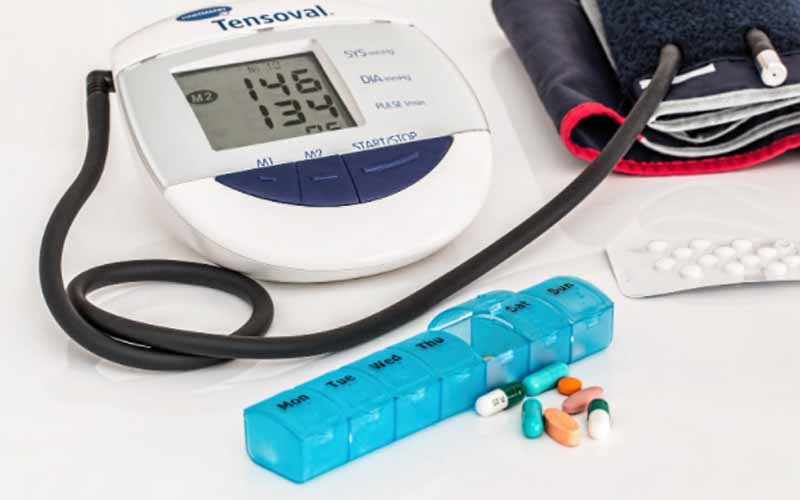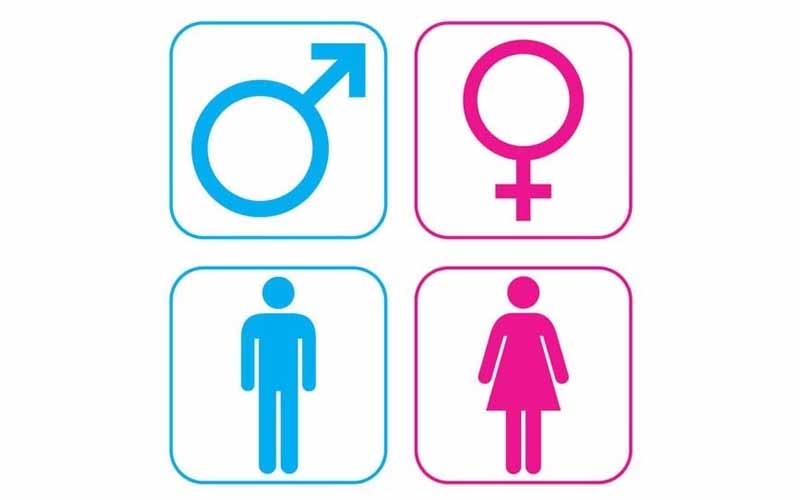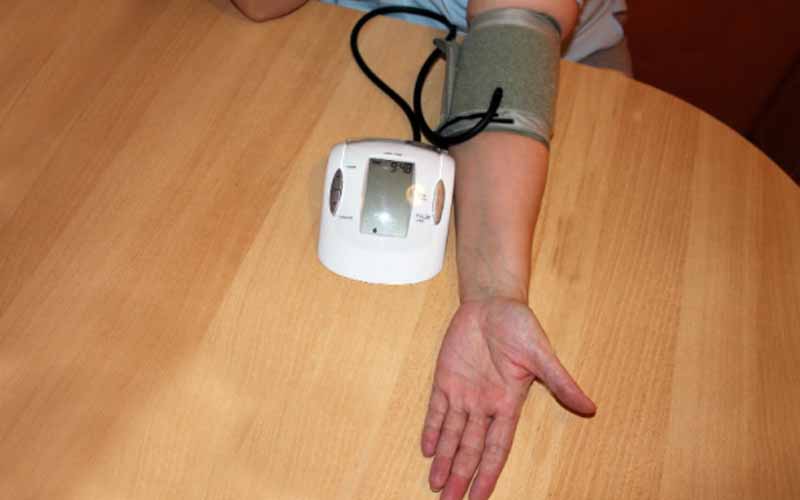Monitoring blood pressure has been around for ages and as technologies advance through the years, newer techniques of keeping blood pressure in check are coming up. Among the many that are creating waves, Pulse Wave monitors and the associated techniques are standing out.
This is a deep look into Pulse Wave techniques that are ways through which blood pressure monitors are able to take advantage of pulse waves that are produced in the circulatory system to be able to detect any irregularity or any slight change in blood flow, velocity, or pressure. These techniques are a much faster way of catching circulatory complications in their infancy.
Table of Contents
What Is a Pulse Wave?

Medically speaking, a Pulse Wave can be described as the wave of increased pressure that is triggered by the ventricular systole that radiates from the semilunar valve of the heart over the arterial system at a rate that varies between 20 and 30 feet per second in different arteries. The Pulse Wave is what is used to check for blood pressure in humans through the use of various equipment that is able to detect the slightest changes in pressure.
When plotted onto a graph, the pulse wave can be classified into four categories:

Class I: This has a distinct incisura which is inscribed on the downward slope of the pulse wave.
Class II: It has no incisura developing anywhere but the line of descent becomes horizontal.
Class III: It has no notch present but a well-defined change in the angle of descent can be observed.
Class IV: There is no evidence of a notch.
History of Pulse Waves Techniques

The first attempt at humans getting a reading of the pulse wave in the blood dates back to 500BC in China. Physicians back then used the palpitations of the wrist as a diagnostic tool during their medical examinations.
This further developed into what was called Maijing in 300AD which was a system that categorized the pulse into 24 types. The Maijing was the first medical literature in the world and it formed the basis of further developments that are now being used in the modern world.
The culmination of human inquiry into the pulse wave finally paid off in a huge way in 1860 when Etienne Jules Mary invented a sphygmograph that could measure the pulse rate. It was the first-ever device that had the ability to record a pulse wave, although not much had been uncovered in regards to how exactly the pulse wave worked.
Further improvements of Etienne’s sphygmograph followed with notable names like Mahomed and Fredrick turning the instrument into what the modern world is more familiar with.
Pulse Wave Techniques

There are two main Pulse Wave techniques that have been in use since the 19th century; Pulse Wave Analysis and Pulse Wave Velocity. Each serves a different function and works in their own way to help the medical world get accurate readings of the blood pressure.
Pulse Wave Analysis
Pulse Wave Analysis was developed in the 19th century by a man known as Mohammed. Using his sphygmograph, he was able to differentiate several cardiovascular diseases, correctly diagnosing them. The heart condition he was able to detect was rheumatic carditis which had proved elusive to medical experts in previous years.
On top of all that, he was able to document his observations of the deleterious effect of some of the common infectious diseases at the time on the whole cardiovascular system, with a special focus on Bright’s disease.
Pulse Wave Velocity
Pulse wave velocity blood pressure refers to the velocity that blood pressure pulses propagate through the whole circulatory system. Clinically, PWV can be used to ascertain the arterial stiffness which makes it a non-invasive method of checking for the various blood pressure-related complications. PWV blood pressure techniques are much more accurate and they have been given a mark of approval by various medical experts around the world.
Interchangeability
PWA and PWV serve almost similar functions with different methodological routes since both are derived from the same pulse wave properties of the blood pressure. However, interchangeability is not possible owing to the fact that they work in wildly different ways.
On one hand, PWV is the official gold standard for arterial stiffness and has been greatly associated with the mortality of the cardiovascular system. PWA on the other hand mainly determines the central pressure wave traits with systolic and diastolic pressures being the main variables.
Medical Applications of Pulse Wave
There are various ways that Pulse Waves can be used in the medical field and more new ways are being discovered every day. So far, the main applications of this technique include the following.
Blood Pressure Monitors

The pulse wave correctly reflects the pulse rhythm of the heart, the heartbeat itself, and the dynamic state of the angiography. All these are vital sources of information that can tell you exactly what is going on with your blood. Blood pressure monitors rely on pulse waves to be able to register a reading through monitoring the systolic and diastolic pressures detected by the pulse waves.
Catheters

This is a soft hollow tube that is passed into the bladder to drain out the urine in people who have complications that stop them from properly emptying their bladders the natural way. Clinical catheters employ the principles of pulse waves and come in various capacities that range between 300-500ml. They are designed to empty the bladder about 6-10 times in a 24hr window.
Factors that Affect the Pulse Wave

The pulse wave, like any other physiological process in the body, is subject to being affected by various internal and external factors. The factors can be split into two categories: Physiological and Disease factors.
Physiological Factors
These are bodily factors that we have no control over, they simply happen because they are part of life’s processes. They include the following.
Age

Age affects many things in the body, from the intensity of the heartbeat to the blood pressure and pulse in the veins and arteries, these changes become more pronounced as you advance in age. The effect of age was first described by Mahomed who noted that aging has obvious effects on the arterial pulses in different locations in the circulatory system.
It has been noted that the Aortic velocity of the blood doubles up between the ages of 20-100, this perfectly explains why the pulse pressure increases as someone advances in age. This is why older people are prone to hypertension compared to younger people.
Physical Fitness

Physical fitness has a huge impact on the health of the arterial pulse wave. When you are engaged in exercises you will have a better arterial pulse, a phenomenon associated with a lower systolic augmentation in the arteries. With more exercise, your blood vessels dilate which in turn reduces the high pulse high blood pressure in the body.
This decreases the wave reflection and the pulse wave velocity in the blood. Lack of exercise has the opposite effect and the more obese an individual gets the strain is increased. This is a major reason why hypertension is higher in people with bodyweight problems.
Diet

What you eat is tied to a lot of things in the human body. Ingesting a small amount of glucose for example will have an instant effect on the pulse wave, it reduces the wave reflection and laters the country of the arterial pulse wave due to an increase in insulin in the body.
When you eat healthy foods that are good for your veins and arteries, the pulse wave in your blood is stabilized which in turn reduces the risks of having blood pressure-related complications. The opposite will be the case if your diet contains a lot of sugar and fats.
The Heart Rate

Various things are altered by any slight change of the heart rate, the ventricular ejection, in particular, is highly susceptible to any changes in the heart rate patterns. Every time the heart rate changes, the contour of the arterial pulse wave also changes. Augmentation increases exponentially when the heart rate reduces and reduces when the heart rate shoots up again.
An increase in the heart rate has also been found to increase the amplification of the pulse wave between the peripheral arteries and the aorta. Things that can increase or reduce the heart rate include anxiety, dehydration, environmental factors like wind and high temperatures, insufficient nutrition, among many others.
Height and Size

The bigger and taller a person is, the higher the needs of the body. It takes much longer and much more energy to get the blood circulating all over the body efficiently. The differences in body heights explain the differences in augmentation between short and tall people. Due to this, it has been found that shorter people are more prone to cardiovascular diseases compared to their taller counterparts.
Gender

Where gender is involved, hormones come into play and as it is already well known, hormones do affect physiological processes. Estrogen for example has very acute effects on arterial stiffness and this is the reason why there is a huge difference between the pulse wave contours in males and females. There are also huge differences between the pulse waves in women who are going through menopause and those that are yet to reach that stage.
Disease Factors
The effect of diseases on the human body cannot be overlooked. Some are so severe that the changes they bring to the body are irreversible. The pulse wave, being a physiological process, is also affected indirectly by diseases. The following are some of the diseases that can impact it.
Arteriosclerosis

Arteriosclerosis is an aging disease that occurs when blood vessels become thick and stiff, restricting the efficient flow of the blood to other organs and tissues. Normally, arteries are flexible and elastic, features that make it possible for them to regulate the pulse wave as they see fit. The condition impacts the contours of the pulse wave negatively and it increases pulse and systolic pressures which lead to a condition called isolated systolic hypertension.
Hypertension

Hypertension is a common cardiovascular condition that affects many people around the world. There are many causes of hypertension but a majority of them are a consequence of aortic regeneration. High blood pressure increases pulse wave velocity which consequently increases the amplitude of the secondary systolic pressure wave in the arteries of the radial region.
Diabetes Mellitus

An increase in blood sugar in the body alters the blood pressure and at the same time, it negatively impacts the effective flow of the blood. The disease also increases aortic stiffness which affects the pulse wave contour. Not much has been found on how exactly the effect the disease has on the pulse wave, so far the research has only scratched the surface. A conclusive answer is not that far off.
Heart Failure

The heart is the engine of the whole circulatory system. It dictates everything, from the speed to the pressure needed to ensure that blood reaches every corner of the body. When the heart is performing at optimum levels then the pulse wave is maintained uniformly throughout the body without any complication. Once the heart is compromised then the pressure falls down sharply and this affects the pulse wave contour alongside other vital parts and processes within the circulatory system.
Effects of Drugs

Drugs, medicinal, or narcotics, do affect the blood greatly. Vasodilators for instance have been found to have favorable effects in the body, thanks to a test conducted by the pulse wave analysis. Hard drugs like cocaine and heroin are known to reduce the heart rate after a while and this could also affect the pulse wave contour.
How the Pulse Wave Works in Measuring Blood Pressure

The working behind the pulse wave when it comes to measuring the blood pressure is very simple. The pulse itself has limitations that make it hard for anyone to determine the true nature of the pressure present in the blood at any given time by touching. This is where the pulse wave comes in. It is formed by the combination of the incident wave, which is the pressure wave that is created by the left ventricle in systole, and the reflected waves which emanate from the periphery vessels.
Through the use of the applanation tonometry, the pulse wave pressure is detected by compressing the artery between an underlying structure and the probe which has a micro manometer tip. By collecting all the minute changes in the blood ranging from the velocity and the pressure, the blood pressure monitor, through the use of the pulse wave technique, is able to determine the blood pressure with the utmost precision.
As technology advances, we are seeing more and blood pressure monitors coming up that are an improvement to the traditional means of measuring blood pressure. When comparing the modern types of BP monitors to the ones that have been used in the past you will come up with various differences that may include the following.
Modern pulse wave monitors are easier to use and can be operated by anyone from the comfort of their homes. Traditional ones, on the other hand, will need the supervision of a physician as they are the only ones trained to properly use them.
PW blood pressure monitors are also cheaper and much easier to acquire. They are widely sold in most stores in residential areas. Traditional sphygmomanometers on the other hand are costlier and are only sold in specific places near hospitals.
There is more accuracy and urgency with PW devices. They take less than 30 seconds to give you the most accurate reading you can ever get from a blood pressure monitor. Traditional devices, although highly accurate in their own right, are not that instantaneous with the results. The doctor will have to conduct at least three tests and do the average to get a concise picture.
Why Do Pulse Wave Blood Pressure Devices Outperform Others?

Humans tend to move towards efficiency when equipment and tools are involved. They try as much as they can to improve what they have in order to make their life more convenient. The following are reasons why pulse wave based blood pressure devices outperform their peers in the market.
Accuracy
Most digital blood pressure monitors employ the pulse wave mechanism and this increases their accuracy to dizzying levels. The ability to detect even the slightest changes in the blood flow velocity or pressure is an underrated feature that has revolutionized the treatment of hypertension. In the past, several measurements had to be taken to get an accurate reading. With PW monitors, you only conduct the test once and you are good to go.
Efficiency
PW blood pressure monitors are very efficient. You can get your results within 30 seconds for the fastest ones in the market. This makes it much easier for doctors to deal with any emergency situation much faster as they are able to quickly diagnose a patient by using the data they can quickly get by using these devices.
Safety
Blood pressure monitors that use pulse wave technology have been certified safe. They are non-invasive and are simple enough to even be operated by a child. Most come with a simple interface that is operated by a single button. On top of all that, they only stay on your hand for less than a minute.
Environmentally Friendly
Pulse wave blood pressure monitors have been designed with the environment in mind. Most are created using recyclable materials in line with the sustainability goals that have been widely instituted around the globe.
Why choose Raycome?
As the medical advancements accelerate around the world, there are companies that have been in the frontlines, making moves and breaking barriers. Raycome is among the ones that are gradually standing out and leaving a mark. When it comes to the latest blood pressure technologies, Raycome should be your first choice and the following are the reason why.
Advanced Technology: One look at Raycome devices and you will automatically see how advanced they are as far as functionalities are concerned. Raycome devices are not only highly accurate but they are designed with the latest tech that is as efficient as they come.
Authoritative Endorsement: In the medical world, getting the acknowledgment of professionals from various regions of the world is the equivalent of the Nobel prize. Raycome devices and services have been given the mark of approval from governments, medical organizations as well as highly acclaimed physicians from various parts of the world. This is a true testament to how efficient Raycome is.
Invention Hub: Raycome goes a step further than simply improving what already exists. The company has come up with novel devices that are going to change the medical landscape in the near future. So far, Raycome has nailed down invention patents in 8 countries with 40 others still pending.
Authoritative Certification: It is not by accident that all the Raycome devices in use today are working without any hitches that one would expect from novel devices. Every Raycome device that comes out of the assembly line is certified by the FSC, CE, ISO, AAMI, ESH, and a host of other licensing bodies around the world.
Innovation: Raycome devices are integrated with a mobile blood pressure app to make it easier for people to operate the devices without any need of a doctor being present. Their BP Secretary app for instance allows you to operate the blood pressure monitor remotely once you have linked the monitor to the app.
After-Sales Services: Once you do business with Raycome, they ensure the relationship goes beyond the transaction. After-sales services like returns, refunds, and others are available to anyone who runs into a mishap with their devices. This ensures that a good rapport is established between the company and its clients all through ensuring that they come back for more in the future.
Conclusion
Pulse Wave technology is here to stay and when you look at what has been accomplished in the blood pressure department because of it, the future looks promising. Thanks to technologies like this, you no longer need to have to rush to the hospital every time you run into complications. All you now need is a reliable pulse wave blood monitor by your side to keep track of your blood pressure anytime you want.



